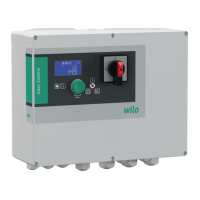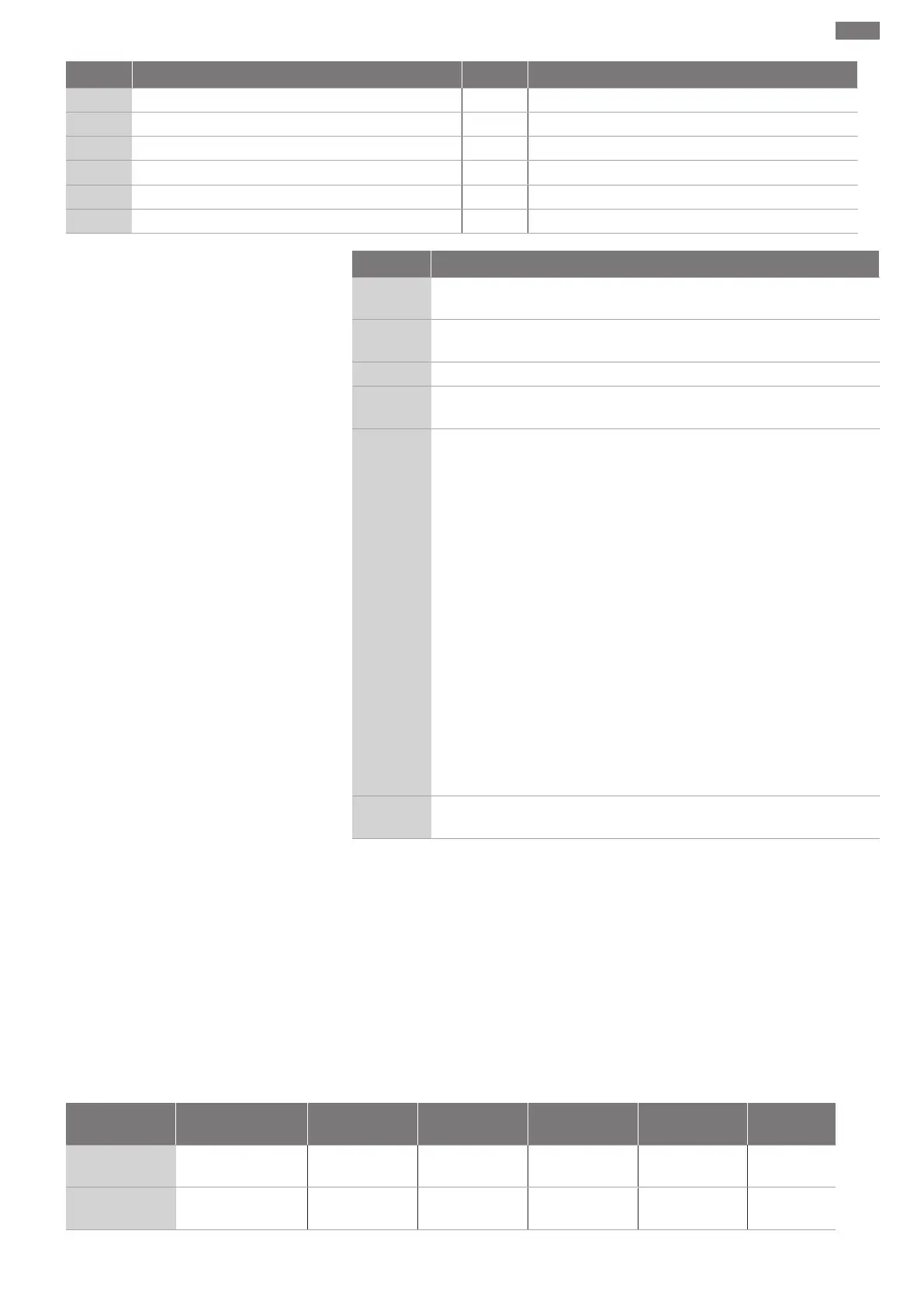en
Installation and operating instructions • Wilo-Control EC-L • Ed.04/2022-09 57
Terminal Function Terminal Function
20/21/22 Output: Collective fault signal 67/68 Input: Leakage detection pump 3
23/24 Input: Pump 1 thermal winding monitor 75/76 Input: “Dry-running protection” float switch (ex-mode)
25/26 Input: Pump 2 thermal winding monitor 77/78 Input: Thermal winding monitor pump 1 (ex-mode)
27/28 Input: Pump 3 thermal winding monitor 79/80 Input: Thermal winding monitor pump 2 (ex-mode)
29/30 Input: Extern OFF 81/82 Input: Thermal winding monitor pump 3 (ex-mode)
31/32 Input: “Dry-running protection” float switch
13.5 ModBus: Data types
Data type Description
INT16 Integer in the range from -32768 to 32767.
The number range actually used for a data point may vary.
UINT16 Unsigned integers in the range from 0 to 65535.
The number range actually used for a data point may vary.
ENUM Is a list. Only one of the values listed in the parameters can be set.
BOOL A Boolean value is a parameter with exactly two states (0–false and 1–
true). Generally, all values greater than zero are classified as true.
BITMAP* Is an array of 16Boolean values (bits). Values are indexed from 0 to 15. The
number read from or written to the register is the sum of all bits with the
value 1 multiplied by 2 to the power of its index.
• Bit 0: 2
0
=1
• Bit 1: 2
1
=2
• Bit 2: 2
2
=4
• Bit 3: 2
3
=8
• Bit 4: 2
4
=16
• Bit 5: 2
5
=32
• Bit 6: 2
6
=64
• Bit 7: 2
7
=128
• Bit 8: 2
8
=256
• Bit 9: 2
9
=512
• Bit 10: 2
10
=1024
• Bit 11: 2
11
=2048
• Bit 12: 2
12
=4096
• Bit 13: 2
13
=8192
• Bit 14: 2
14
=16384
• Bit 15: 2
15
=32768
BITMAP32 Is an array of 32Boolean values (bits). Please check Bitmap for the calcula-
tion details.
* Example for clarification:
Bit 3, 6, 8, and 15 are 1. All others are 0. The sum is then 2
3
+2
6
+2
8
+2
15
=8+64+256+32768
=33096. It is also possible to do the calculation the other way round. Based on the bit with
the highest index, check whether the read number is greater than/equal to the power of
two. If this is the case, bit 1 is set and the power of two is deducted from the number. Then
the check with the bit with the next lower index and the recently calculated residual num-
ber is repeated until bit 0 is obtained or the residual number is zero. Example for clarifica-
tion: The read number is 1416. Bit 15 will be 0, since 1416<32768. Bits 14 to 11 will also
be 0. Bit 10 will be 1, since 1416>1024. The remainder will be 1416-1024=392. Bit 9 will
be 0, since 392<512. Bit 8 will be 1, since 392>256. The remainder will be 392-256=136.
Bit 7 will be 1, since 136>128. The remainder will be 136-128=8. Bits 6 to 4 will be 0. Bit 3
will be 1, since 8=8. The remainder will be 0. The remaining bits 2 to 0 will thus all be 0.
13.6 ModBus: Parameter overview
Holding register
(Protocol)
Name Data type Scale & unit Elements Access* Added
40001
(0)
Version communica-
tion profile
UINT16 0.001 R 31,000
40002
(1)
Wink service BOOL RW 31,000

